Small but Mighty: Sprouts and Microgreens Pack a Punch
Kate Malin, Foodwise Volunteer
January 30, 2024
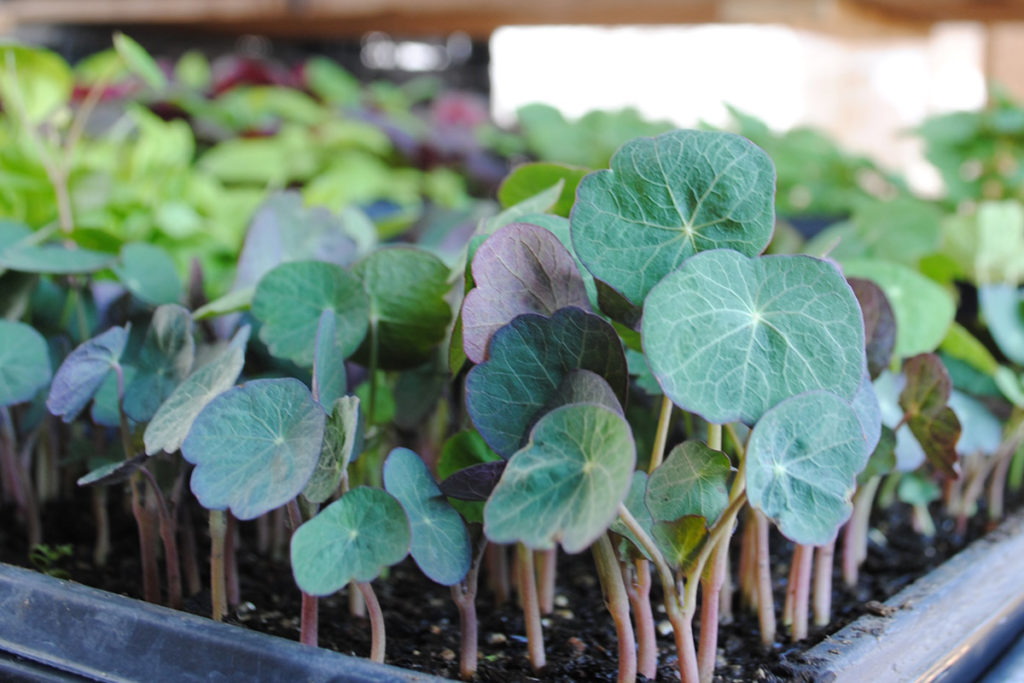
As tourists and locals alike stroll through the Ferry Plaza Farmers Market on Saturdays, their eyes often gravitate to the bright green sprouts and microgreens on display at both the Brooks and Daughters and Marin Roots Farm stands. Nestled between other fruit and vegetable vendors, the many vibrant shades of green stand out, attracting passersby, some of whom have never seen these tiny plants before. (Full disclosure: I worked at the Brooks and Daughters booth for a year, so I’ve seen it all!)
Many chefs who shop at the farmers market have discovered sprouts and microgreens, and use them to add complexity and subtle texture to their dishes at restaurants like State Bird Provisions, The Progress, Rich Table, Boulevard, and Perbacco, to name a few.
But casual shoppers are often unfamiliar with the different types of sprouts and microgreens and their health benefits and culinary uses, which makes education key.
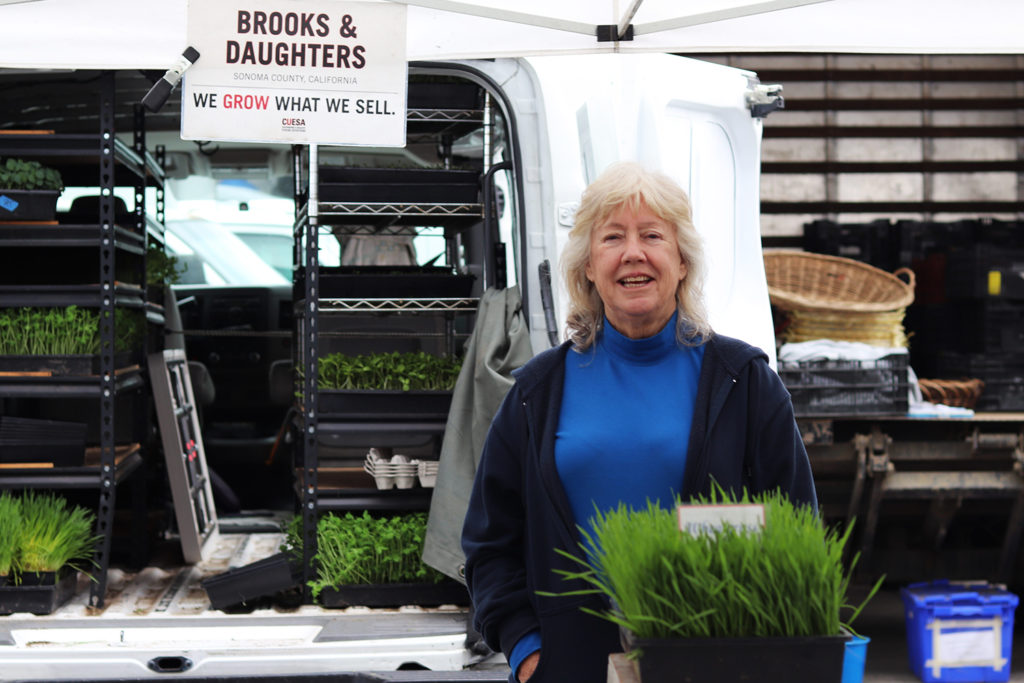
Sprouts vs. Microgreens
There are sprouts, and then there are microgreens. “Sprouts are the first baby leaves that come out of the seed. The first leaves are actually cotyledons,” explains Corie Brooks, owner and farmer at Brooks and Daughters. “And then microgreens are the second set of leaves, the true leaves, that grow.”
“When they grow the second set of leaves (known as ‘true leaves’), we label them as microgreens,” he continues. “We grow both, because different plants are tastier or more nutritious at different stages.” While both sprouts and microgreens start as germinated seeds, sprouts are harvested after just a few days and the entire plant (seed, root, and shoot) is consumed. Microgreens are grown for longer, typically 10 to 14 days in soil or a growing medium, and are cut when ready to eat, leaving the seed and root behind.
Both are incredibly nutritious, containing more vitamins and carotenoids than mature plants, sometimes five times more, according to Moira Kuhn of Marin Roots Farm, which sells most of their sprouts directly to chefs.
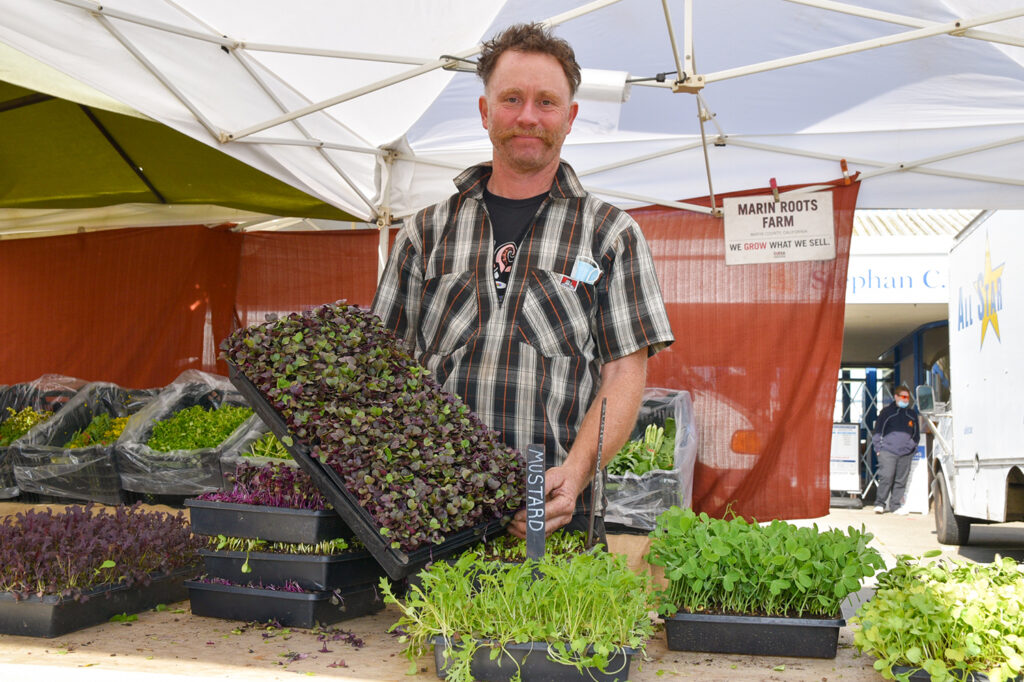
Sprouts and Safety
A few shoppers are wary of sprouts due to worries and misconceptions about their safety. Commercially grown sprouts, both domestic and foreign, have been implicated in “sproutbreaks” in the past, typically harboring Salmonella, but also Listeria and E. coli.
The warm, moist environment that sprouts thrive in is also friendly to bacteria, so when a sprouts operation has poor sanitation practices, an outbreak can occur. However, growing on a smaller scale, like the operations at Brooks and Daughters and Marin Roots Farm, greatly reduces the chances of contamination by allowing for more extreme control and attention to safety.
Growing on a smaller scale, like the operations at Brooks and Daughters and Marin Roots Farm, greatly reduces the chances of contamination by allowing for more extreme control and attention to safety.
Ultimately, it is up to shoppers to decide whether they are comfortable with the risks of eating sprouts. When shopping, avoid sprouts with a musty smell or slimy, milky appearance, and always refrigerate your sprouts when you get them home.
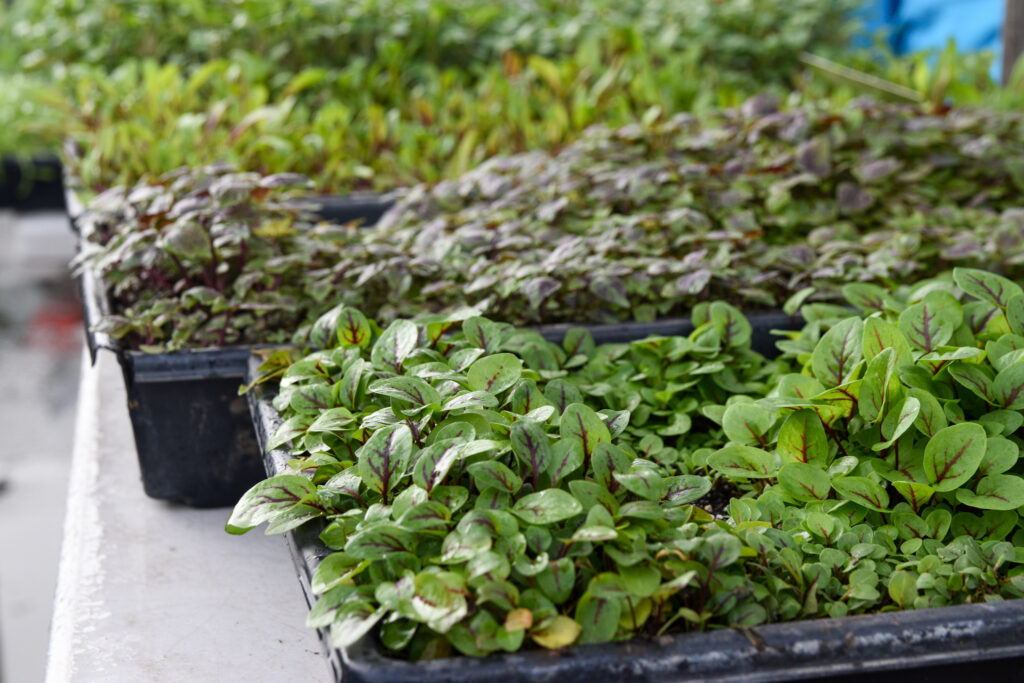
Taste the Spectrum
Sprouts and microgreens can be grown from legumes, grains, vegetables, and herbs, and one of the best ways to learn about the flavor and texture differences is to sample the variety on offer at the farmers market.
The most common type of sprout is alfalfa. A sweet and mild sprout, alfalfa is high in protein, calcium, B vitamins, vitamins C, D, E and K, and phytoestrogens (plant compounds that help lower the risk of heart disease, cancer, and osteoporosis). It also has small amounts of calcium and potassium. This sprout is delicious on its own, but is also great in combination with other, more strongly flavored sprouts. At Brooks and Daughters, alfalfa and clover, another mild tasting sprout, form the base for several popular salad mixes.
Fenugreek is one of the heartiest sprouts that Brooks and Daughters sells, with a texture like a bean sprout and a subtle bitter flavor. A legume that is rich in iron and used medicinally to cleanse the lymph system, fenugreek seeds are a staple in many Indian dishes. It has also been well documented that eating fenugreek can make you smell like maple syrup, so don’t be alarmed if you exude a sweet scent after sampling.
Another favorite sprout is broccoli, which packs a full broccoli flavor (with a hint of spiciness) into a much more delicately textured plant. Broccoli sprouts carry ample vitamins and minerals.
While microgreens are older and therefore sturdier than sprouts, they also have a range of flavors, textures, and nutritional benefits. Sunflower microgreens, a favorite of many chefs at the Saturday market, are crisp, with a nutty and fresh taste. They are high in protein, fiber, calcium, magnesium, phosphorus, and essential fatty acids.
Another popular and vitamin-rich microgreen, available by the bag at Brooks and Daughters and by the flat at Marin Roots Farm (when in season), is mustard microgreens. They are delicate in texture, with a spicy kick.
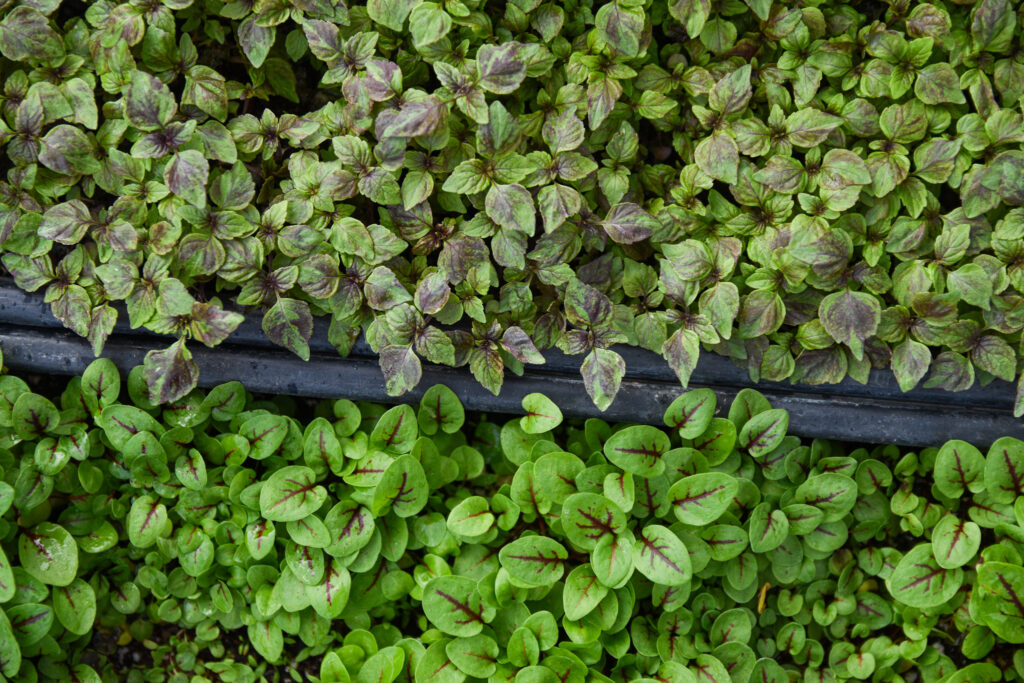
Best Uses for Baby Greens
A common question from shoppers after they have tasted sprouts and microgreens is how to use them. As one might guess, they are wonderful in salads, but that’s only the beginning.
“Microgreens can create a fun twist that adds depth to what the dish is portraying,” says Moira. She loves to see the creative ways that local chefs use microgreens to garnish their dishes. “One of our chefs is serving a grilled corn polenta with blanched corn microgreens as a garnish.”
Sprinkle sprouts and microgreens on cooked foods like vegetables, grains, and meats, or add them to smoothies, sandwiches, and wraps. The addition of a spicy radish sprout, for example, might add punch to an otherwise mild dish, while a tender cilantro microgreen delivers a much more subtle flavor than the mature plant.
Many customers, unable to resist, open up their bags and simply munch on the fresh, crisp, flavorful greens or sprouts immediately after purchase.
Find Brooks and Daughters and Marin Roots Farm in the back plaza on Saturdays.
This article has been updated from a previously published version.
Topics: Farmers, Nutrition, Vegetables
